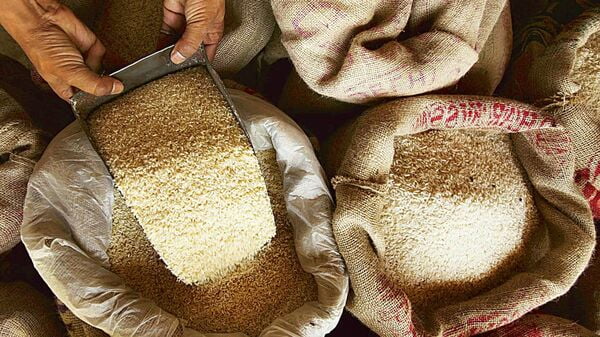In the face of the burgeoning Israel-Hamas conflict, anxieties heighten for the Gem & Jewellery Export Promotion Council (GJEPC) of India, an industry known for its sizable contribution of more than $1.2 billion in exports to Israel in the last fiscal year alone. Your crucial role of cutting and polishing a lion’s share of 90% of the world’s rough diamonds and providing employment for approximately two million people has thrust you into a precarious situation, made all the more challenging by a crisis in demand that has spur experts to propose pausing the importation of rough stones for two months. The ongoing strife, described as “grave,” has led exports to already slump by 30.27% year on year. These impacts ripple out to the relationship with Israel, a vital diamond re-export market for you, also known for exporting rough diamonds worth $1782.80 million. Heading into the festival season, usually marked by a surge in demand, this year is appearing to be an exception. Industry bodies suggest taking a break from importing rough diamonds from mid-October to mid-December. As of FY23, your trade surplus with Israel stood at a robust $6.1 billion. Main exports embrace diesel and refined diamonds while rough and polished diamonds dominate imports.

Background of the Israel-Hamas Conflict
The roots of the conflict
The conflict between Israel and Hamas has longstanding roots, dating back to the mid-20th century. These roots are deeply tangled with issues of territorial claims, religion, nationalism, and power dynamics. The conflict has escalated and deescalated multiple times over the years, leaving both Israeli and Palestinian communities living in anticipation of the next outbreak.
Recent developments and escalations
The latest conflict that started in May 2021 has seen both sides intensify their military campaigns, resulting in unfortunately high numbers of civilian casualties. As both parties remain deeply entrenched in their absolutions, it is sparking fears of further violence and instability in the region.
Impact on global economy and markets
The Israel-Hamas conflict has implications reaching far beyond their borders, affecting global markets and economies, and adding to the tensions already heightened by the COVID-19 pandemic. Among the sectors affected, one unexpected victim has been the gem and jewellery industry, particularly in countries like India, which has strong ties with Israel in this sector.
India’s GJEPC: An Overview
Role and significance of GJEPC
The Gem & Jewellery Export Promotion Council (GJEPC) acts as the apex body of the gem and jewellery trade in India. It plays a pivotal role in promoting and regulating the export of gems and jewellery from India, making it a key player in the Indian economy.
India’s dominance in cutting and polishing rough diamonds
India is known as a global leader in cutting and polishing rough diamonds, with its craftsmen handling a whopping 90% of the world’s rough diamonds. This industry sustains around two million jobs in India, marking its crucial position in the social and economic structure of the country.
Indian gem and jewellery export market
India’s gem and jewellery export market is colossal, with Israel being one of its main destinations. For example, in the last financial year alone, the country exported over $1.2 billion worth of gem and jewellery products to Israel.

Israel’s Importance to India’s Gem and Jewellery Industry
Annual export figures to Israel
As mentioned earlier, the gem and jewellery export market to Israel plays a vital role in India’s economy. In the previous financial year, the export amounted to more than $1.2 billion, which reveals the significance of this relationship.
Israel as a primary diamond re-export market for India
Israel is not just a significant import market but is also a primary diamond re-export market for India. Notably, India exported rough diamonds worth $1782.80 million, a sizeable figure considering the ongoing conflicts.
India’s trade surplus with Israel: key contributors
India’s trade relationship with Israel isn’t just about gem and jewellery exports. The country maintains a trade surplus with Israel, valued at $6.1 billion for the financial year 2023. Key exports included diesel and diamonds, while the primary imports consisted of rough diamonds and polished diamonds.
Current Crisis in the Gem and Jewellery Industry
Drop in demand for diamonds
Unfortunately, the demand for diamonds is experiencing a significant drop-off, primarily due to the worldwide economic fallout of the COVID-19 pandemic. The deterioration in global markets has led to a sharp decrease in disposable income, contributing to this drop in demand.
Decline in exports year-on-year
The gem and jewellery industry, already battling a crisis due to plummeting demand, has seen its exports decline by 30.27% year-on-year. The ongoing Israel-Hamas conflict only adds to these woes.
Calls for import halt of rough stones
In the face of falling demand, industry leaders and bodies are suggesting a halt in the import of rough stones for two months. The idea is that such a pause could help align the industry’s practices better with the current market conditions.

Effect of Israel-Hamas Conflict on India’s Gem and Jewellery Sector
Immediate effects and figures
The immediate effects of the Israel-Hamas conflict on India’s gem and jewellery sector are of concern. A grim picture is being painted with falling exports and increasing tensions.
Projected long-term impacts
Long-term impacts are expected to be even more profound. Market dynamics may change drastically, and demand may not bounce back quickly. Also, the continuance of the conflict could further challenge India’s trade surplus with Israel.
Concerns of industry bodies
Industry bodies are understandably concerned about this situation. They are actively seeking solutions and lobbying with the Indian government for assistance in these challenging times.
GJEPC’s Response to the Crisis
Statements and reactions from GJEPC
The GJEPC has been proactive in its response to the current crisis. It has expressed concern over the falling demand, declining exports, and the escalating Israel-Hamas conflict. It is actively working on several fronts to combat this crisis.
Planned actions and strategies to mitigate impacts
GJEPC has proposed a series of actions and strategies to mitigate the crisis’s impact. These include plans for stimulating domestic demand, improving exports, and advocating for industry-friendly government policies.
Interactions with government and policy makers
Recognizing the need for government intervention in the current crisis, GJEPC has indulged in intense interactions with policymakers. It has been influential in advising government actions meant to support the beleaguered industry.

Industry Suggestions for Rough Diamond Imports
Proposal for a pause in imports
In light of the prevailing crisis, industry bodies have suggested a pause in importing rough diamonds. This measure, planned from mid-October to mid-December, could help the industry adapt to the lower demand.
Potential benefits and drawbacks of the halt
While the proposed import pause may have potential benefits, it is not without drawbacks. A pause could help the industry reduce costs and align with the market demand, but it could also lead to a loss of jobs and affect the industry’s global competitiveness.
Implications for the festival season demand
Typically, the festival season sees a significant surge in diamond demand. However, this year might become an exception due to the ongoing crises.
Implications for Indian Economy
Impact on employment levels in India
Given that the diamond-cutting industry supports about two million jobs in India, a decline in the industry has serious implications for unemployment levels.
Effect on India’s trade balance and surplus
The crisis in the gem and jewellery sector may also impact India’s trade balance and surplus, given that the sector is a key contributor to India’s positive trade balance, particularly its trade surplus with Israel.
Potential shifts in market dynamics
The crisis may also lead to a shift in global market dynamics in the gem and jewellery industry. This could potentially lead to a more serious and long-term impact on the Indian economy.
Projected Outlook for India’s Gem and Jewellery Industry
Experts’ forecasts for the sector
Experts’ forecasts for the sector are understandably gloomy given the current crisis. There are concerns that the industry may take a long time to recover, given continued uncertainties in both domestic and international markets.
Potential scenarios and outcomes
The potential scenarios and outcomes in the gem and jewellery industry in the post-conflict era are not yet known. It all depends on how long the conflict lasts and the extent of the global economic downturn.
Role of GJEPC in damage control and recovery
The GJEPC’s role in damage control and recovery from this crisis appears both prominent and promising. It is expected to play a central role in industry lobbying, policy advocacy, and instilling confidence in both domestic and international markets.
Conclusion: Way Forward Amid Crisis
Key measures to be taken by GJEPC
GJEPC will need to continue its stewardship role, which involves key measures such as lobbying with the government for supportive measures, instilling confidence in global markets, and liaising with stakeholders.
Government’s role in supporting the sector
The government also has a crucial role to play in supporting the sector through this crisis. This might involve strengthening the sector through policy measures and grants, helping build resilience against future crises.
Ensuring resilience of the sector in the future
To ensure resilience against future crises, both GJEPC and the government need to rethink their strategies. A more concerted focus on domestic demand, innovative practices, and promoting Indian gems and jewellery on global platforms may be the way forward.

